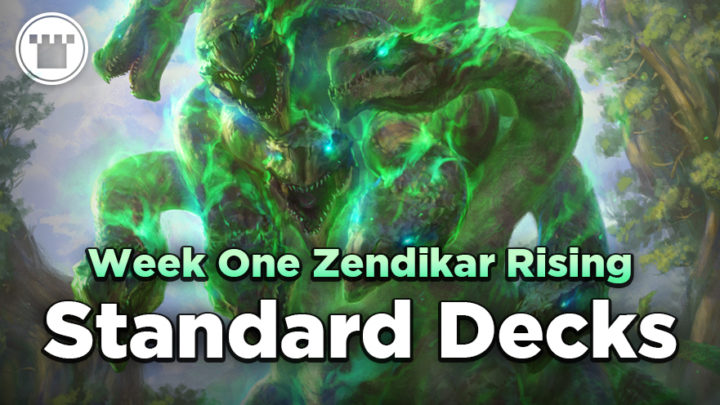Standard rotation is here, and we’ll be saying farewell to many format-defining cards. The powerful shock lands, the record-high number of planeswalkers, even the big payoffs for decks like Sacrifice — all gone. Expect some really big shake-ups with this rotation.
If you’re looking for a deck to play in the Arena queues this week, I have a couple decks that I think could be exciting starting points. But first, a few disclaimers:
- I tried to be considerate of wildcards when building these decks. This set is extra demanding for wildcards, especially with the modal double-faced lands.
- I’m not going to go over a single Uro deck today. There will be plenty of those out there, and I’d like to focus on exploring other decks that might be left out of conversation. This last year had some really powerful decks, and that suppressed some strategies that I hope will gain a lot from rotation.
- Finally, I have not played with any of these decks yet! If you find that any of these cards aren’t working for you on ladder, by all means, make some changes. These decks aren’t built to be 100% correct; my main goal is to provide some early builds that might spark some creativity in you.
BG Adventures
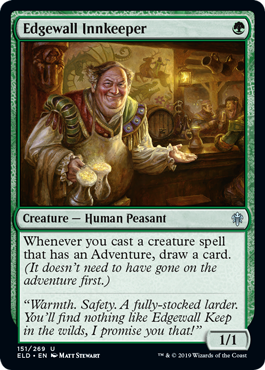
First up is a deck that should be easy on your wildcards if you’ve been playing since last year. BG Adventures is a proactive midrange deck that uses adventure synergies and Jolrael to draw cards and take over the game. You can have some powerful starts of Innkeeper, Order of Midnight, and Lovestruck Beast, but you can also go long thanks to your card-draw engines and removal.
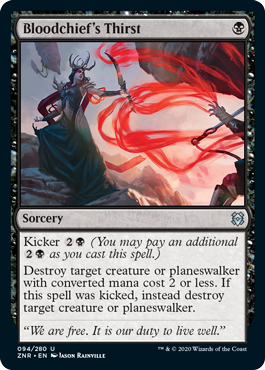
This deck doesn’t gain a lot from Zendikar Rising outside of Bloodchief’s Thirst — a premium removal spell that the deck is very happy to add alongside Murderous Rider. Bloodchief’s Thirst will be great at making sure you don’t get run over, and it can really help clean up in the late game; I covered all its strengths in our early look at Zendikar Rising Standard cards last week. Having such clean universal answers means you won’t have to worry about dealing with the diverse threats your opponents will present in Week 1.
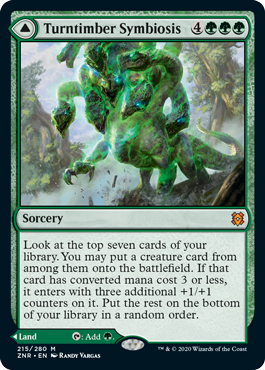
The other big gets are the two mythic flip spells. Turntimber Symbiosis is a great card to top-deck if you flood out a little bit in the late game. This isn’t the best Symbiosis deck when it comes to raw power, but when you expect to use the card as a mana source most of the time, you’ll be happy to draw it when you need a creature.
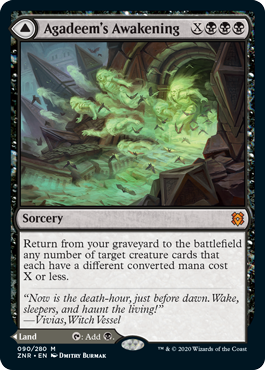
Agadeem’s Awakening is the new card I’m most excited about. It’ll be a land in the majority of your games, but in the mid-to-late game, it will allow you to rebuild instantly and threaten your opponent. For six mana, you can get Edgewall Innkeeper, Jolrael, and Lovestruck Beast back from your graveyard! The deck is very good at making land drops due to the sheer number of cards it draws, so this sort of play won’t be a problem; and on the off-chance that you’re having mana problems early, Awakening fixes that. I don’t mind playing a 26-land midrange deck that plays 22 actual lands.
If you’re looking for a midrange game plan that leans aggressive, this is where I’d start:
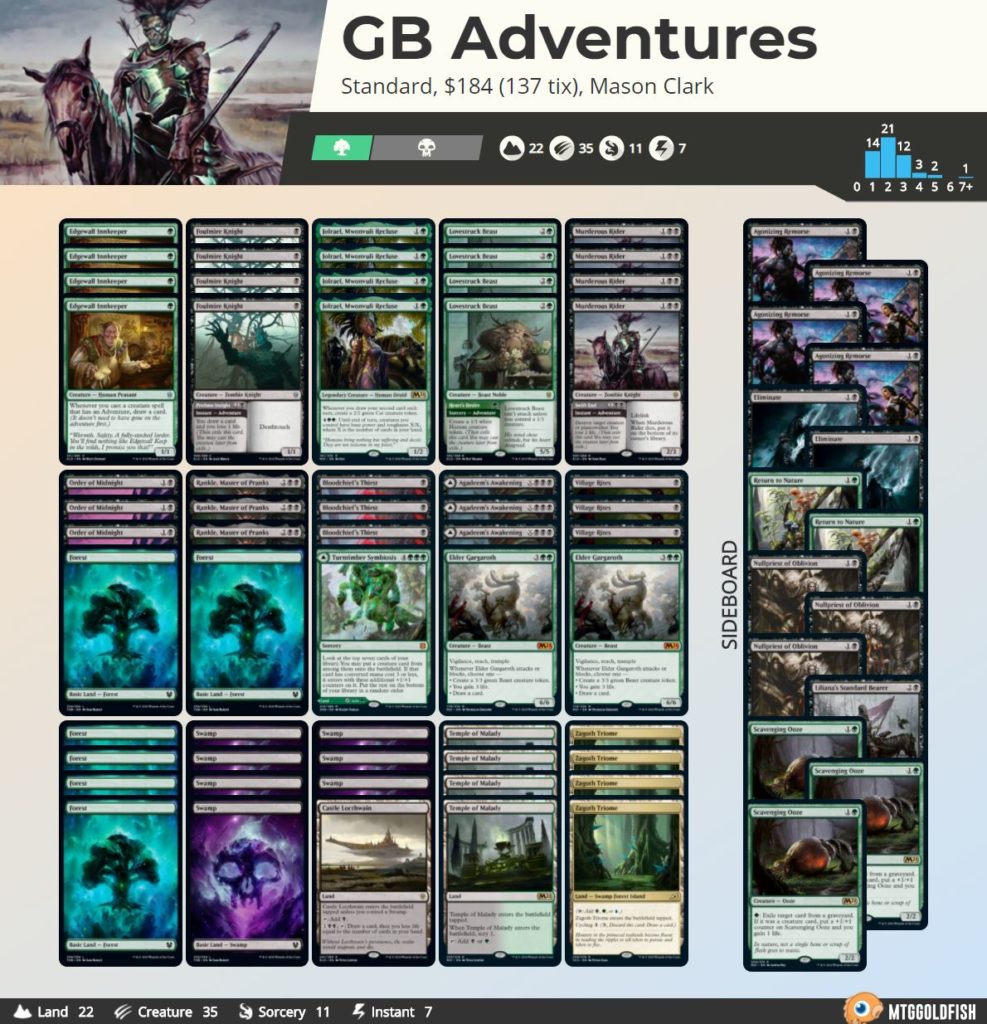
Buy this deck from Card Kingdom
Export this deck to Arena via MTGGoldfish
UR Tempo
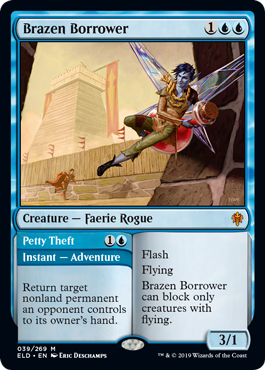
This deck seems really cool to me in theory, but I’m still figuring out how strong it’ll be in the meta. Like all Blue-Red Tempo decks, this one tries to be as mana-efficient as possible, and it has some really powerful creatures that can end the game quickly. A lot of times, your deck can end up floundering a bit while you try to assemble the pieces, but both Bonecrusher Giant and Brazen Borrower serve as both answers and extremely fast clocks.

This deck also has a lot of cheap disruptive plays to buy time before you can deploy your threats. It can play a low-to-the-ground tempo game versus control decks, but you can also board in Irencrag Pyromancer to slow down the aggressive decks. Lots of decks can be versatile and “meh” in a lot of match-ups, but this shell seems to be quite good at pivoting to real plans post-board.
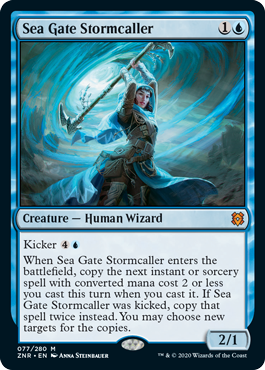
Like BG Adventures, UR Tempo gains a few small additions from Zendikar Rising. Sea Gate Stormcaller — another card I wrote about last week — definitely has a place in this deck, especially if you’re looking to go all-in on cards like Riddleform. We also have Into the Roil now. (For our Arena Zoomers, it’s basically Blink of an Eye.) Into the Roil will do a great job at keeping your opponents at bay while you chip away.
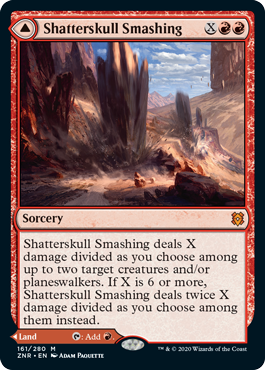
But the biggest addition, in my mind, is Shatterskull Smashing. Of the double-faced mythics, this seems to be the one getting the least amount of love, but this deck can take great advantage of both sides. When you lack a lot of hard answers, an “X” spell is great.
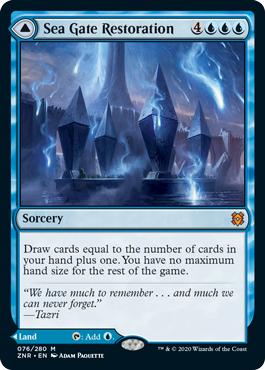
I also included one Sea Gate Restoration in this list, but I’m much less excited about it. We need to get to seven lands to cast it, but we don’t have a lot of raw card draw. That being said, I think double-faced cards will be format-defining, and I want to try them out in the first week. If you’re looking for another card with a similar effect, try Boon of the Wish-Giver.
This is one of the decks that I expect to change the most in the first 48 hours, as the answers are going to need to line up fairly well with the format’s biggest threats. The metagame will dictate whether we can play Shock or whether we need Scorching Dragonfire or Fire Prophecy instead. Or maybe you’ll really want Essence Scatter. These decks are highly tunable and the cards move around a lot, so don’t be afraid to try new things.
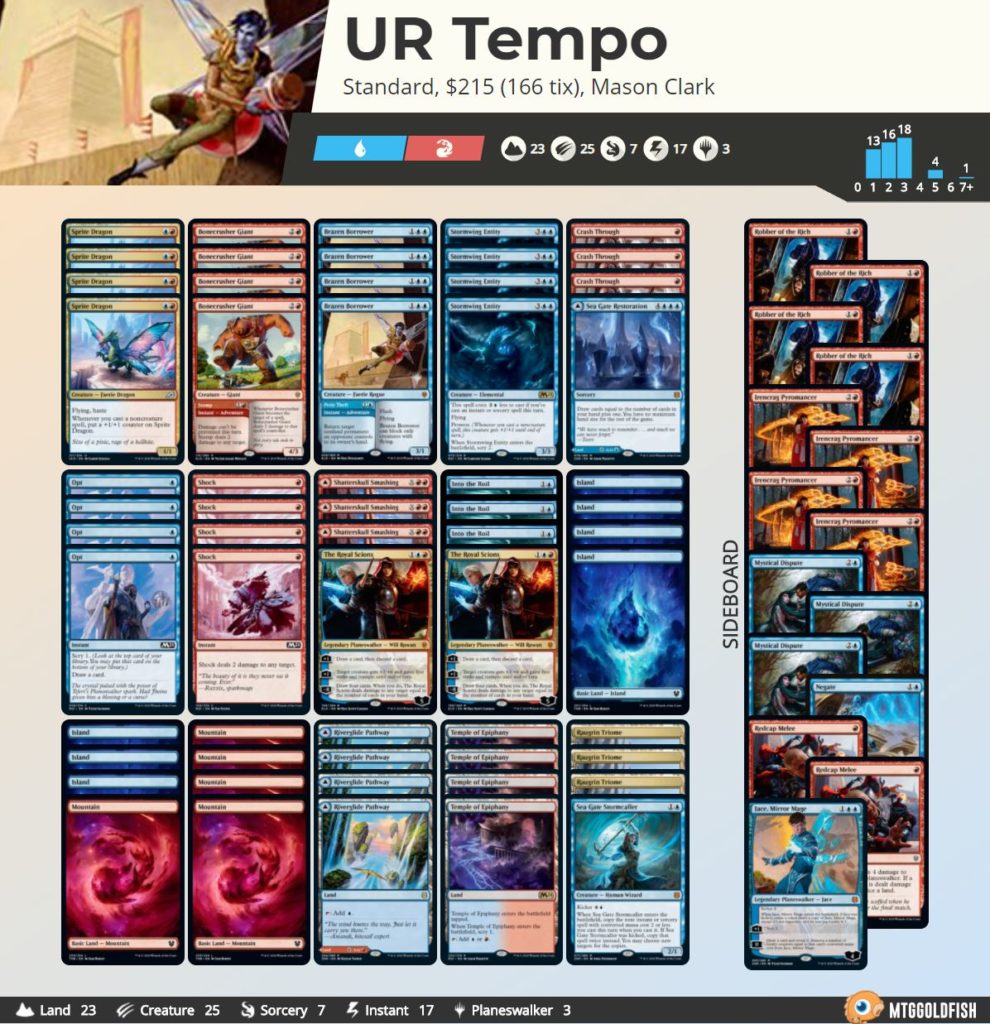
Buy this deck from Card Kingdom
Export this deck to Arena via MTGGoldfish
Mono-Black

Mono-Black Aggro had its moments in the last few months, and it still has some powerful cards left over. This deck’s plan is to quickly develop the battlefield and take board control. I expect it to be especially powerful in the first week, as many players will be trying more ambitious decks and will need time to tune their mana bases; meanwhile, this deck has clean mana and just needs to figure out the right threats for the weekend.
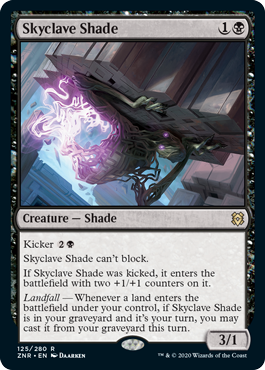
In the past, Mono-Black decks have succeeded thanks to recursive cards like Scrapheap Scrounger. Skyclave Shade does a good Scrounger impression, and it has the added ability to get larger in the late game. Another big include in this deck is the new Nullpriest of Oblivion. A 2/1 menace lifelinker for two would be tempting, but in the late game, her kicker ability really shines. Agadeem’s Awakening can play a crucial role in this deck as well when you need to rebuild.
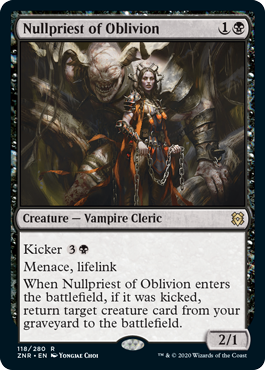
This deck has real power in the early game and the late game, which is always important for aggressive decks. If you’re looking for good, clean mana and the versatility to either run over opponents or grind them out, you’ve found your Week 1 deck.
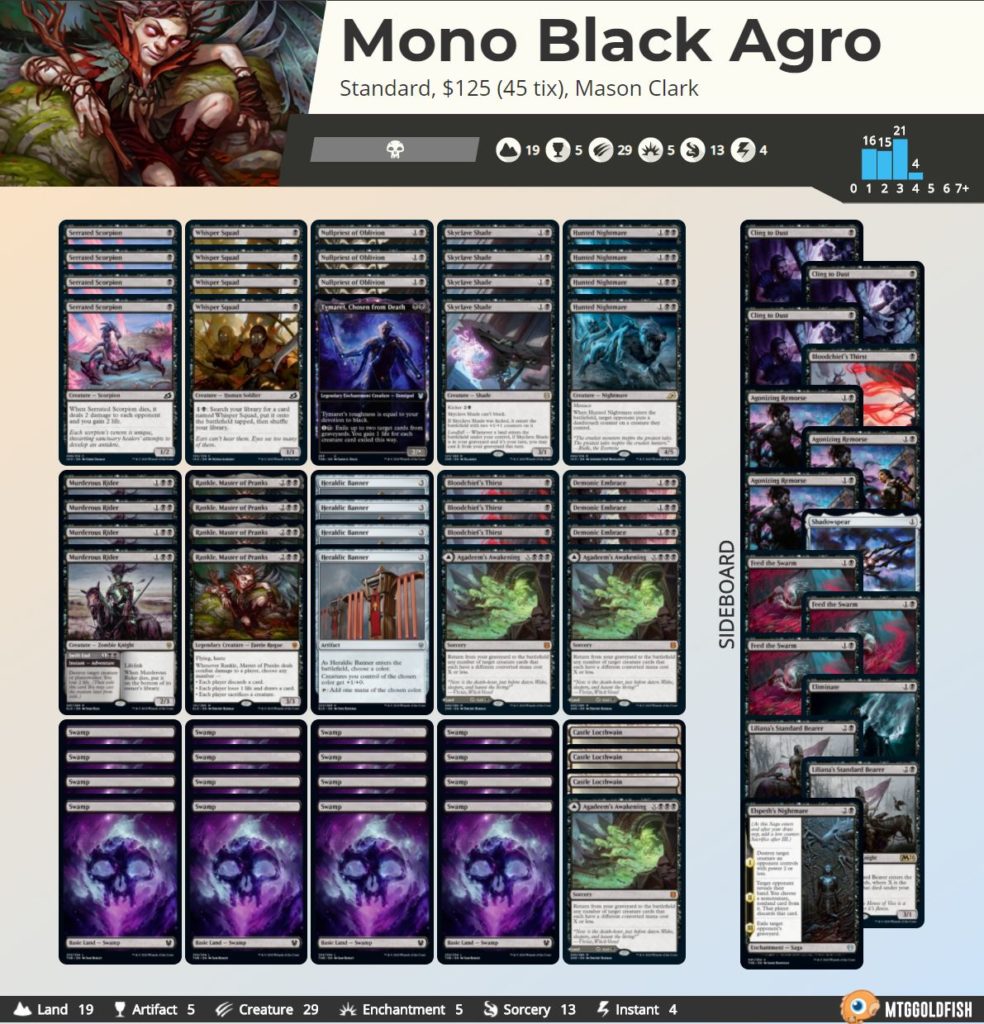
Buy this deck from Card Kingdom
Export this deck to Arena via MTGGoldfish
Jeskai Cycling
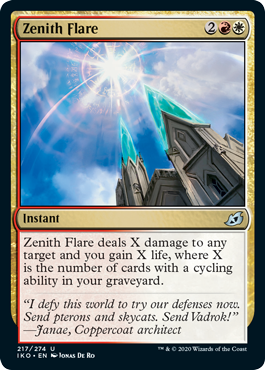
This deck remains relatively unchanged after rotation, but it gains a few lands that can cast your blue spells if you need them. And honestly, that just might be enough to make this deck top dog again. This deck still excels at putting opponents on the back foot early with a Flourishing Fox draw and finishing opponents off with a Zenith Flare if the game goes long. Plus, with the addition of Selfless Savior in M21, you can make sure your Fox or Drannith Stinger sticks around or protect your Lurrus in the late game.

The biggest draw to playing this deck post-rotation is that it gets two sets of Pathways in Zendikar Rising. That allows you to have the same number of untapped red and white sources as the old builds while free-rolling the blue splash. With the addition of the Triomes, you can actually afford to play a small amount of blue cards in the ’board. Typically, you’ll want to play your Riverglide Pathways on the Lavaglide side, but once you have one or two red sources, you can play it as a blue source to unlock all the blue spells that you could only cycle in the past. Decks that get to do this sort of things at such a low cost are going to be the big winners with this rotation.
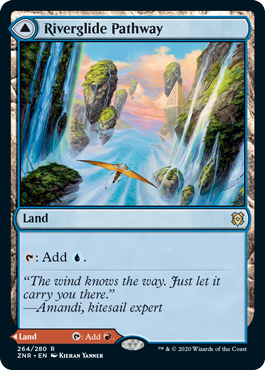
Historically, this deck has a hard time beating Soul-Guide Lantern, and I won’t lie — that hasn’t changed. I expect a fair amount of Lanterns in the format, but this deck will be a good choice for at least the first week. If players can figure out a way to overcome the Lantern problem, I could see this being one of the best decks in the format. I’m going to try some Improbable Alliances in the sideboard, but that might end up being too slow and cute to ultimately work out.
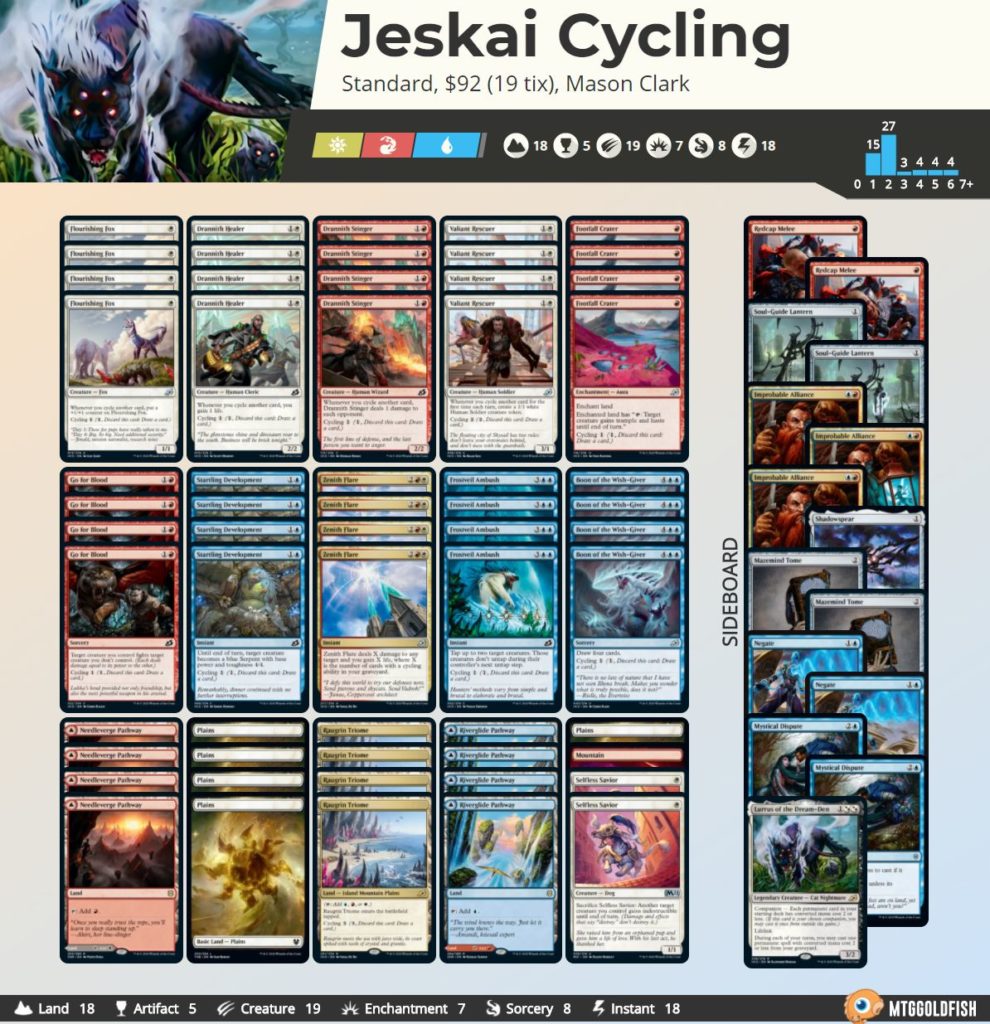
Buy this deck from Card Kingdom
Export this deck to Arena via MTGGoldfish
Hopefully these decks are helpful on the ladder going into this new Standard. Zendikar is a plane about exploration and adventures, so don’t be afraid to go off the beaten path. I’m sure Uro decks will still be among the decks to beat, but we won’t know for sure until we’re two or three weeks in. In the meantime, have fun and try things out!
Tag @masoneclark and @card_kingdom on Twitter with the decks you’re having the most success and fun with in Standard!

Mason Clark is a grinder in every corner of the game who has played at the pro level and on the SCG Tour with Team Nova. Whether he’s competing in Standard, Historic or Modern, Mason plays with one goal in mind: to be a better player than he was the day before. Check out his podcast, Constructed Criticism, and catch his streams on Twitch.

